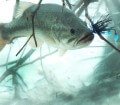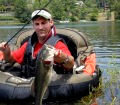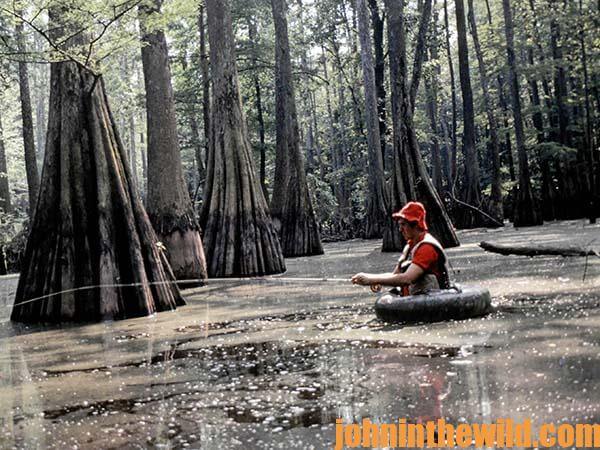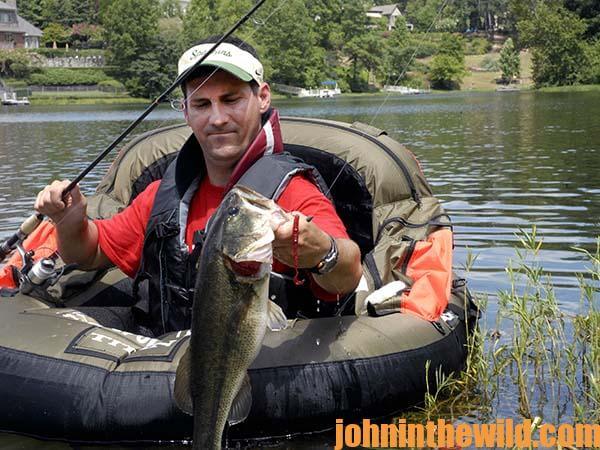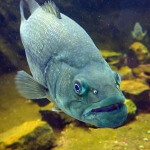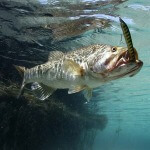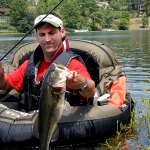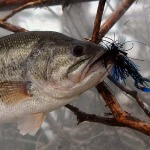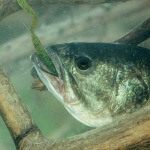John’s Note: If you want to catch more and bigger bass and have more fun doing it, then a tube boat or a belly boat may very well be your answer. Dr. Robert Sheppard of Tuscaloosa, Alabama, is one of the most-serious bass fishermen I ever have met. Whatever he needs to catch bass, Sheppard will buy it, modify it, invent it or figure out a way to borrow it.
Bob is also a loner who doesn’t enjoy a day on the lake, flying across water at 50 to 75 miles an hour and watching others do the same thing. He likes the quiet waters away from the crowds where he won’t see another angler and generally catches more and bigger bass.
Belly boats can be fished in a variety of places, but Sheppard prefers to fish streams.
“I’ll often take a small two-man bass boat down a stream until I reach an impasse.” ~ Dr. Robert Sheppard
“The majority of my bass fishing is small water angling,” Sheppard says. “I like to fish beaver ponds and old sloughs off main rivers or small streams. I want to get away from the crowds and catch the bass that rarely see a lure. There is less fishing pressure on these smaller bodies of water, so the bass have opportunities to grow larger. The lack of fishing pressure also produces more-aggressive and easier-to-catch bass. I enjoy fishing quiet places away from the noise of humanity. Oftentimes these waters are harder to reach, but once you find them, the bass are usually easier to catch.”
Stream fishing is rapidly growing in popularity across the country.
Almost any weekend anglers in flat-bottom johnboats, kayaks or canoes paddle down small streams to catch bass. Although the tube boat is an ideal craft for stream fishing, Sheppard goes one step further than most stream anglers. “The best sections of the stream to fish are where the boat fisherman can’t reach,” Sheppard explains.
“Generally there are logs or fallen trees that block off streams at a certain section. Though there may be a lot of fishing pressure up to that point, many stream fishermen won’t try and pull their boats around the obstacle. That’s where my tube boat fishing begins. I’ll often take a small two-man bass boat down a stream until I reach an impasse. Then I’ll leave the boat at the log across the stream, put on my featherweight waders, my felt-soled tennis shoes and a pair of flippers designed especially for the wade fisherman that go over the tops of my shoes and then climb into my belly boat like the White River ones from Bass Pro Shops (http://www.basspro.com).
“Once in the water, I start floating downstream and casting. Usually there will be current in the stream. When I come to a piece of structure that I want to make several casts to, I’ll kick my flippers slightly. Instead of moving back upstream, I hold in the current and stay still. Then I can really work a piece of structure. I can fish all angles around the cover, and if there’s a bass in there, I can catch it.”
To learn more about bass fishing, get John E. Phillips’ Kindle eBooks and some print books, Click the titles of these books “How to Bass Fish Like a Pro,” “How to Win a Bass Tournament,” “Catch the Most and Biggest Bass in Any Lake: 18 Pro Fishermen’s Best Tactics, “How to Become A Tournament Bass Fisherman,” click here.
Share this page with a friend!
 About the Author
About the Author
John Phillips, winner of the 2012 Homer Circle Fishing Award for outstanding fishing writer by the American Sportfishing Association (ASA) and the Professional Outdoor Media Association (POMA), the 2008 Crossbow Communicator of the year and the 2007 Legendary Communicator chosen for induction into the National Fresh Water Hall of Fame, is a freelance writer (over 6,000 magazine articles for about 100 magazines and several thousand newspaper columns published), magazine editor, photographer for print media as well as industry catalogues (over 25,000 photos published), lecturer, outdoor consultant, marketing consultant, book author and daily internet content provider with an overview of the outdoors.

